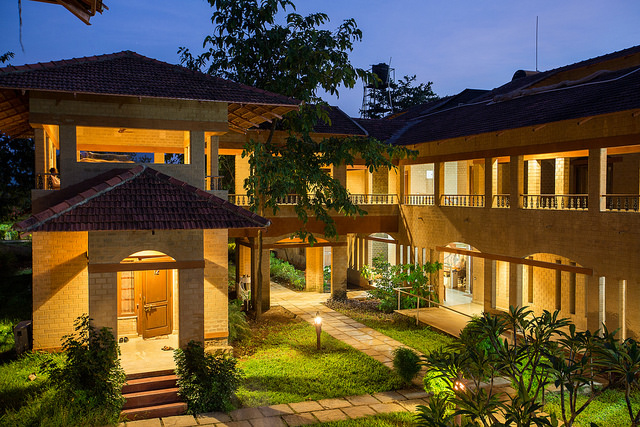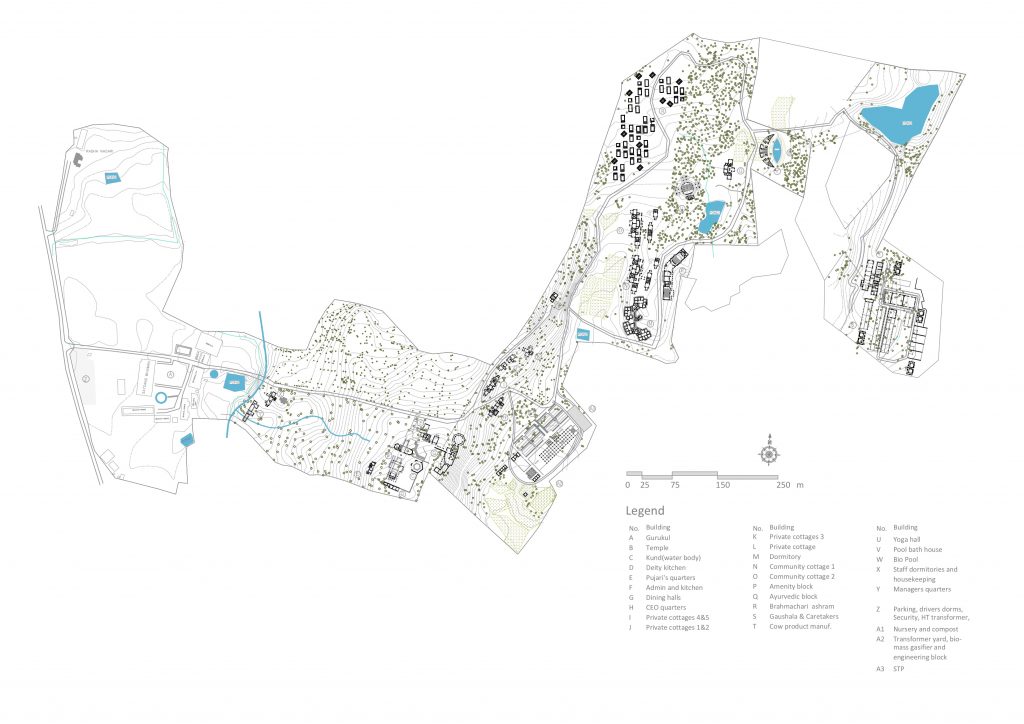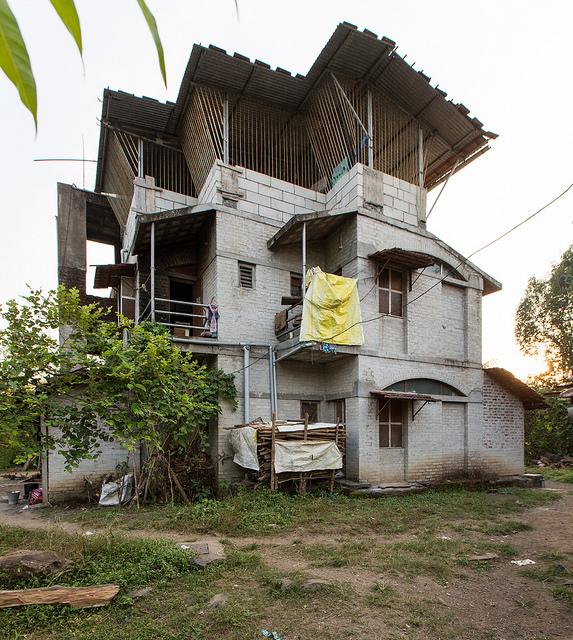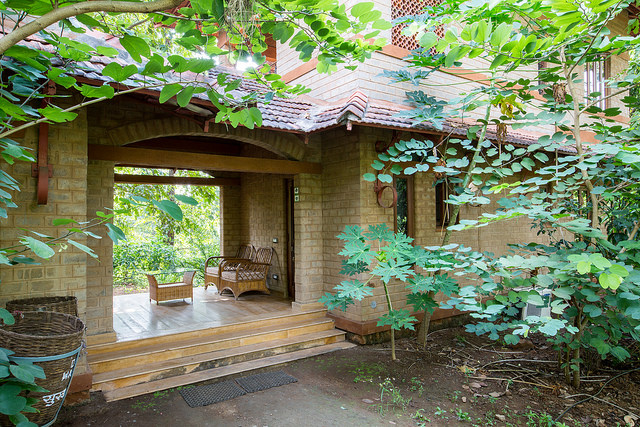
CONTEXT
The site is located 100 kms north of Mumbai, in a rural area at the foot hills of the Sahyadris, and lies between the hill Kohoj Gad and the river Vaitarna. The site is undulating with prominent ridges and valleys. Agriculture, primarily paddy was grown in the valley areas. The valleys with black cotton soil also formed the drainage for the rainwater. The higher lands had groves, mostly of Teak and Toon, most of which had been harvested by the previous owners of the land before handing over the land to the buyers. These higher land patches also had the best wind conditions micro-climatically.

With respect to the locale Galtere experiences a composite climate with extreme summer reaching to 45 degrees, rains of 3000 + mm and winter dipping to 8 degrees. Micro- climatically in the site, hot summers are compounded by hot winds blowing off the rocky face off Kohoj hill and nights tend to be chiller than lands away from the hills.
CONSTRAINT-
- Location – The site is away from any manufacturing base or skill base, with Mumbai being the closest 100 kms away. All major materials other than steel and cement had to come from Mumbai including skilled labour. It was thus important to reduce this transfer of materials and also impart skills to the locals so as to reduce both economic and ecological costs .
- Water- Other than rains which provided for agriculture, all domestic and animal husbandry depended on groundwater for sustenance. It was important that groundwater management be integrated into the planning exercise from the onset of planning activities.
- Energy- As is common knowledge rural India suffers from both quality and quantity of electricity which made it imperative that the future habitation is self-sufficient in its needs of future.
These constraints are thus becoming the marker for carrying capacity of the land and it is on the basis of availability of these resources the total occupancy is going to be determined.
THE BRIEF
The project was to develop a retreat for the devotees of ISKCON,Girgaum Chowpatty Mumbai. The brief included, other than accommodation to develop seminar, prayer, wellness, dining facilities and a Gaushala for hundred cows. The buildings are built on High ground where they receive better breeze and are designed to be only one bay deep to allow for cross ventilation. Large semi-covered spaces provide for comfortable daytime use.

Sustainable Design Strategies:

Water Management:
Hydrogeological study provided us with clear recharge and discharge zones suggesting the extraction pattern with respect to quantity available. This was the basis for the overall site planning with respect to buildings, services and roads.
With on-site treatment of waste water, nutrient rich water is now available throughout the year and food is grown even in summer months.
Preservation & Enhancement of Land Use:
From a denuded plantation the land had to become an eco-system which while providing for human habitation also had to be bi diversity positive in the long run
Resource Management: Site as a Quarry:
As the location was far from manufacturing base the site was mapped for availability of earth for making of buildings and through expert skill transfer the future constructions are possible.
The ponds and water bodies were made in the areas where soil was suitable for earth construction.
Innovative Construction Technologies and skill transfer:




Various approaches to use of earth as construction material has been tried here and different techniques are employed depending upon the use of the space and the skill of the builder.
Through introduction of precast construction, U-Block lintels, and standardization of building elements like arches and windows speeded the construction process thereby reducing the of construction. The first phase was built using skilled masons from Bangalore. In the subsequent phases, the local mason’s picked up the skills of using alternate technologies and are now working on projects outside of GEV, using these technologies.
Project Facts
Design Team: Chitra Vishwanath, Sharath Nayak, Anshu Ahuja, Surabhi Pandurangi
Structural Designer: Professor Yogananda / Pramod A.V / Ravindranath Bontadka
Photographer: Vivek Muthuramalingam







One Response
Hello , I am student currently in 5th year architecture and wanted to know if its possible to get the architectural plans of cottages . Will help in my thesis a lot .